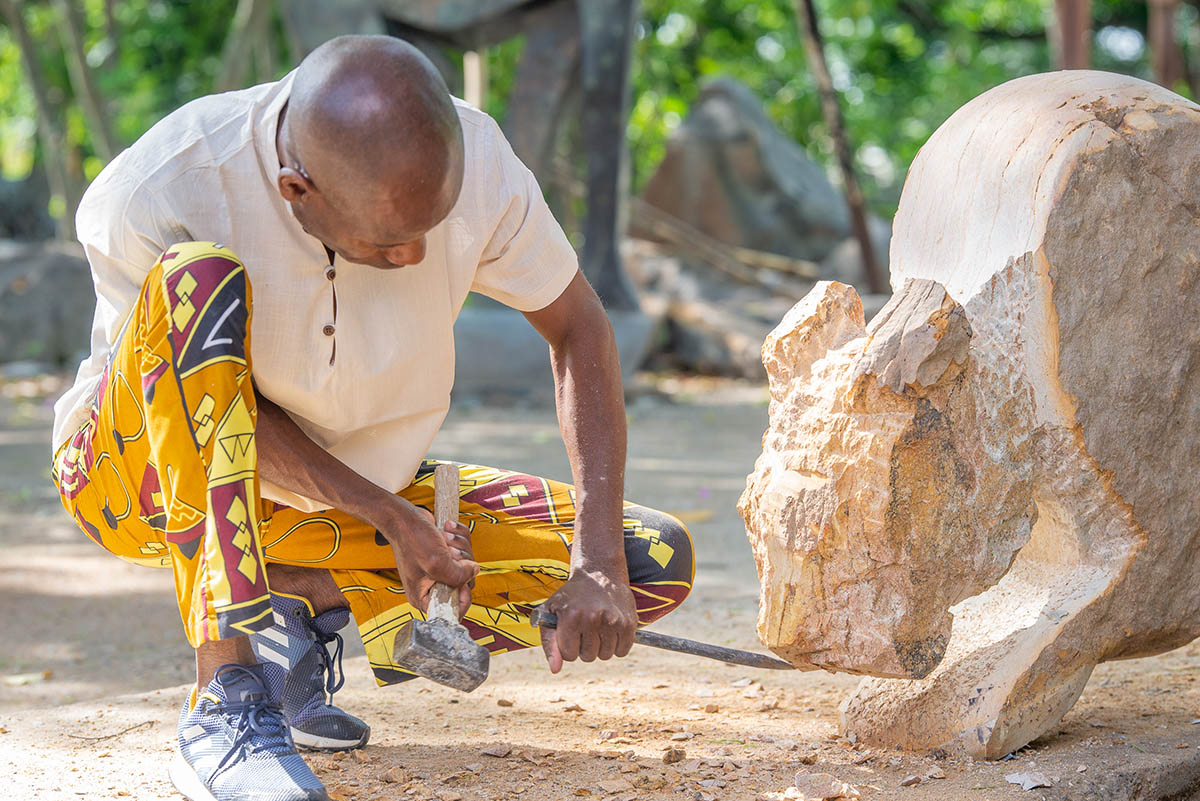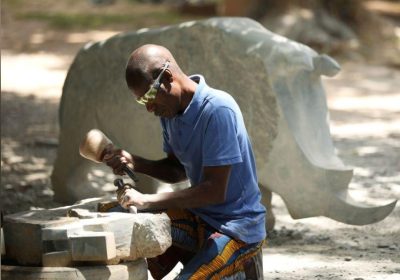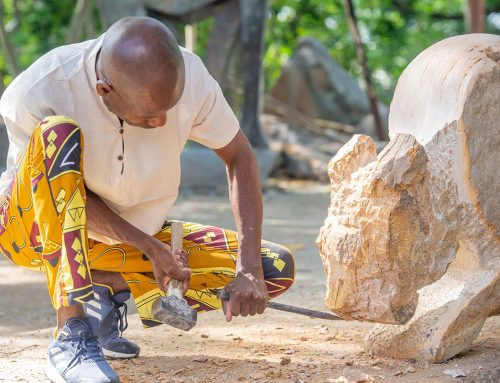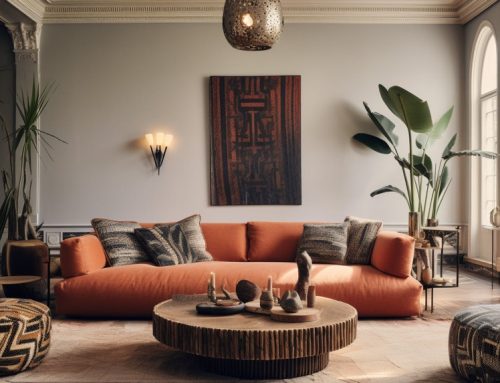
Zimbabwean Sculpture: Stones and Methods
Although today’s sculptors have access to modern tools like grinders and compressors, they continue to rely on hand tools including chasing hammers, rasps, punches, steel combs and sandpaper. The primary stone used is serpentine which is quarried along a 300km stretch in central Zimbabwe known as the Great Dyke. Local names like Springstone, Opal Stone and Cobalt refer to specific mineral configurations and color patterns in the serpentine which share densities similar to North American marbles. Many sculptors often highlight the stones’ striking colors by tediously sanding, heating and then polishing smoothed surfaces with a clear, carnuaba-based wax. Zimbabwean sculpture is ideal for indoor and outdoor settings. Nature’s elements only enhance the stones’ natural colors as intense heat, cold and moisture have little effect on stone that has already weathered the harsh elements in Africa for centuries.
Zimbabwean sculpture encompasses a wide range of themes that reflect the cultural, social, and political context of Zimbabwe. This ancient art form has deep roots in the country’s history and traditions, and its themes provide a glimpse into the diverse narratives and expressions of Zimbabwean culture.
One prominent theme in Zimbabwean sculpture is spirituality and the connection to ancestral beliefs. Many sculptures depict spirits, ancestors, and mythical creatures, reflecting the deeply ingrained spiritual beliefs of the Zimbabwean people. These sculptures often serve as a form of communication with the spiritual realm and convey a sense of reverence and respect for the ancestral spirits. The artworks also symbolize the importance of maintaining a harmonious relationship with the spiritual world, which is central to the cultural identity of Zimbabwe.
Another prevalent theme in Zimbabwean sculpture is the celebration of everyday life and the beauty of the natural world. Artists often draw inspiration from the country’s stunning landscapes, wildlife, and agricultural practices. Sculptures portraying wildlife, such as elephants, lions, and birds, are frequently seen, capturing the vitality and majesty of these creatures. Additionally, sculptures depicting scenes of daily life, such as women carrying water, farmers tilling the land, or children playing, highlight the importance of community, hard work, and resilience in Zimbabwean society.
Social commentary is also a recurring theme in Zimbabwean sculpture. Artists use their craft to shed light on social issues, political events, and the struggles faced by their communities. Sculptures may depict themes of poverty, inequality, corruption, or the impact of colonization. These artworks serve as a powerful medium for artists to voice their concerns, challenge the status quo, and provoke thought and discussion among viewers. Through their creations, Zimbabwean sculptors express their aspirations for a more just and equitable society.
The theme of identity is explored in Zimbabwean sculpture, reflecting the complexities of the country’s history and cultural diversity. Sculptors often depict traditional attire, hairstyles, and facial markings to celebrate and preserve cultural heritage. These artworks serve as a reminder of the importance of embracing one’s roots and honoring the unique identities within Zimbabwean society. They also challenge notions of assimilation and promote cultural pride and inclusivity.
Furthermore, the theme of resilience and survival is frequently portrayed in Zimbabwean sculpture. The country has faced numerous challenges throughout its history, including political unrest, economic hardships, and environmental crises. Sculptors capture the indomitable spirit of the Zimbabwean people, showcasing their ability to persevere in the face of adversity. These sculptures serve as a source of inspiration and hope, reminding both the local community and the world at large of the strength and resilience of the Zimbabwean people.
In recent years, a growing theme in Zimbabwean sculpture has been environmental conservation and sustainability. As the country grapples with the effects of climate change and ecological degradation, artists have turned to their craft to raise awareness about environmental issues. Sculptures made from recycled materials or inspired by nature highlight the urgent need to protect Zimbabwe’s natural resources and promote sustainable practices. These artworks prompt viewers to reflect on their own role in preserving the environment and fostering a more sustainable future. Artists Wallen Mapondera and Moffat Takadiwa are prime examples of Zimbabwean artists using recycled objects to create their sculpture.
Zimbabwean sculpture encompasses a diverse range of themes that reflect the country’s history, culture, and societal challenges. From spirituality and everyday life to social commentary, identity, resilience, and environmental conservation, these themes provide a rich tapestry of narratives and expressions. Zimbabwean sculptors continue to contribute to the global art scene, capturing the essence of their society and sparking dialogue on important issues. Through their works, they invite us to appreciate the beauty of Zimbabwean culture, contemplate its complexities, and find inspiration in the human spirit.




